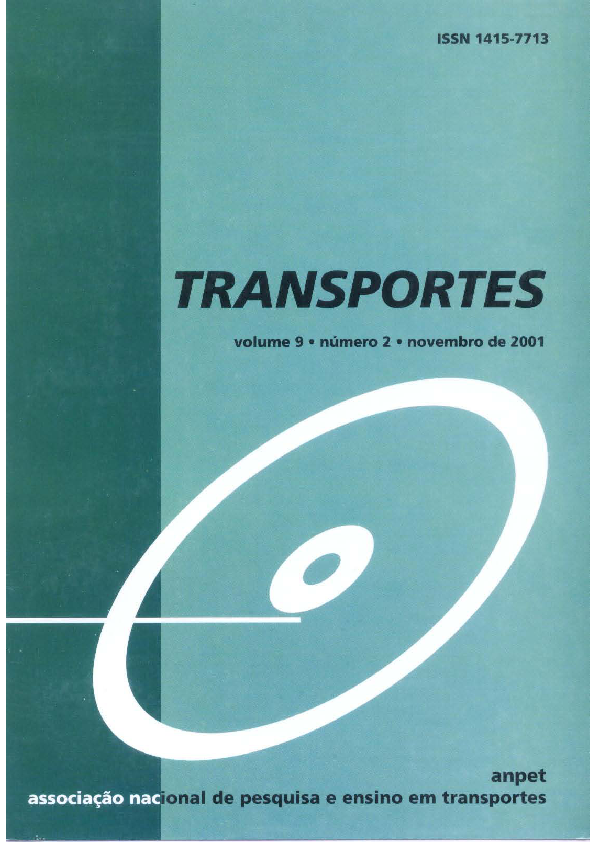Auditoria da segurança viária
DOI:
https://doi.org/10.14295/transportes.v9i2.170Abstract
A Auditoria de Segurança Viária - ASV, originada no Reino Unido na década de 80, tem por objetivo diminuir a probabilidade de ocorrência de acidentes de trânsito por meio da realização de vistorias periódicas com foco nas questões de segurança. Este artigo objetiva revisar a ASV, apresentando seus principais conceitos, objetivos, resultados alcançados, aplicabilidade, aspectos legais, custos e benefícios.
A realização de ASV no Brasil é ainda muito incipiente. Por outro lado, em países como a Inglaterra, Dinamarca, Canadá, Austrália e Nova Zelândia, que possuem índices de acidentes substancialmente menores que os brasileiros, a realização de ASV já é prática obrigatória.
A adoção da ASV possibilita economias significativas de recursos. A experiência resultante de duas décadas de condução de ASV sugere que os custos associados à sua execução representam um aumento de apenas 4 a 10% no custo total do projeto. Embora os benefícios gerados sejam de difícil quantificação, estima-se que a condução de ASV resulte em relações benefício-custo na ordem de 15:1; estimativas mais otimistas avaliam essa relação em 20:1. Essas estimativas indicam o grande potencial de retorno social e econômico decorrente da sua aplicação, o que referenda a difusão atual da prática de ASV por diversos países do mundo.
Downloads
Downloads
Published
How to Cite
Issue
Section
License
Authors who submit papers for publication by TRANSPORTES agree to the following terms:
- The authors retain the copyright and grant Transportes the right of first publication of the manuscript, without any financial charge, and waive any other remuneration for its publication by ANPET.
- Upon publication by Transportes, the manuscript is automatically licensed under the Creative Commons License CC BY 4.0 license. This license permits the work to be shared with proper attribution to the authors and its original publication in this journal, and to be adapted for non-commercial purposes, provided appropriate credit is given and any derivative works are distributed under the same terms.
- Authors are authorized to enter into additional separate contracts for the non-exclusive distribution of the version of the manuscript published in this journal (e.g., publishing in an institutional repository or as a book chapter), with recognition of the initial publication in this journal, provided that such a contract does not imply an endorsement of the content of the manuscript or the new medium by ANPET.
- Authors are permitted and encouraged to publish and distribute their work online (e.g., in institutional repositories or on their personal websites) after the editorial process is complete. As Transportes provides open access to all published issues, authors are encouraged to use links to the DOI of their article in these cases.
- Authors guarantee that they have obtained the necessary authorization from their employers for the transfer of rights under this agreement, if these employers hold any copyright over the manuscript. Additionally, authors assume all responsibility for any copyright infringements by these employers, releasing ANPET and Transportes from any responsibility in this regard.
- Authors assume full responsibility for the content of the manuscript, including the necessary and appropriate authorizations for the disclosure of collected data and obtained results, releasing ANPET and Transportes from any responsibility in this regard.









